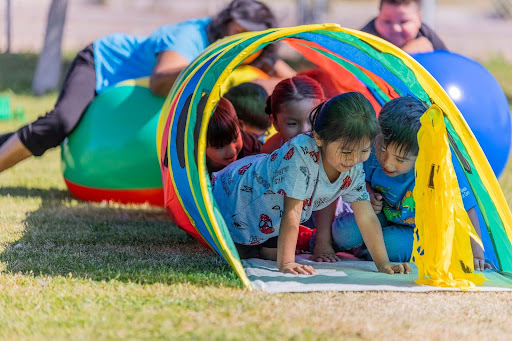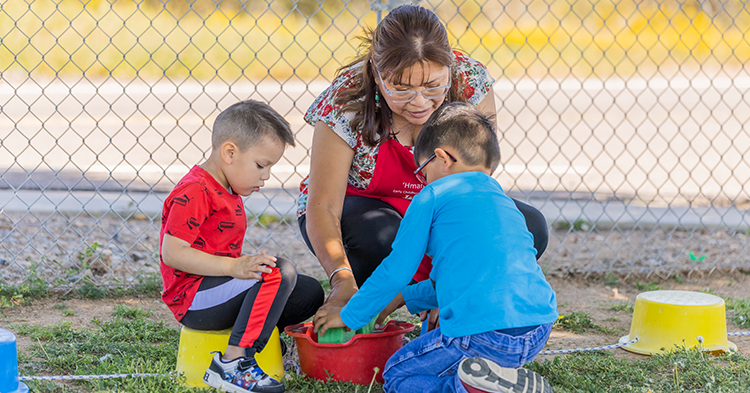As an early childhood educator, you play a vital role in preparing children for their next big step: kindergarten. Families trust you to keep their children safe, nurture their growth, and set the foundation for lifelong learning. But kindergarten readiness isn’t just about knowing ABCs or counting. It’s about fostering curiosity, social and emotional skills, and a love of learning.
So, how do you help families understand what it means to be ready for kindergarten?
What Does Kindergarten Readiness Mean?

Kindergarten readiness means being ready to learn. Families may expect preschoolers to achieve specific milestones, like writing their name, but readiness looks different for every child. As an educator, it’s your role to share what readiness truly entails and show how your program supports this development. Think about it this way: as an early educator, you may be the family’s first educator outside the family unit. How you talk about learning equips families to become advocates for their children’s education in the years to come.
Six Tips for partnering with families
1. Highlight Play-Based Learning
Young children learn best through hands-on, play-based activities. Whether you’re working with infants, toddlers, or preschoolers, play is the foundation for learning. When families are in your program, point out examples of children learning through play. Explain how these activities strengthen problem-solving, creativity, and social skills. Check out our blog Communication Matters: Talking with Families about Learning through Play for ideas.
2. Focus on Learning Standards
Help families understand how your program aligns with learning standards that support children’s development. The Arizona Department of Education offers the following tools to support both families’ and educator’s understanding of young children’s learning and give ideas for planning rich learning experiences:
- Arizona’s Infant and Toddler Developmental Guidelines describe expectations about what infants and toddlers should know and do across multiple domains of development, as well as what adults can do to support optimal learning and development.
- The Arizona Early Learning Standards cover a broad range of skill development and provide a useful instructional foundation for children from diverse backgrounds and with diverse abilities. The standards are intended for use by all those who work with young children.
3. Emphasize Social and Emotional Learning
Social and emotional skills are critical for kindergarten readiness but are sometimes overshadowed by academic goals. Highlight how your program helps children develop skills like taking turns, playing cooperatively, and identifying feelings. Share observations of children’s progress in managing emotions and building relationships.
4. Showcase Learning in Action
Families may not always see the learning happening in your program. Documenting these moments can make learning more visible. Use these strategies:
- Anecdotal Notes: Write short descriptions of children’s actions, words, or interactions that demonstrate learning.
- Photographs: Capture children’s play and projects, like block towers or dramatic play scenes, to show learning in action.
- Work Samples: Save drawings, paintings, and other creations to illustrate growth over time. These mementos also become treasured keepsakes for families.
5. Support Independence and Self-Help Skills
An important part of getting ready for kindergarten is learning self-help skills. How can you encourage children to feel confident doing things for themselves? Kids who can dress themselves and use the restroom independently are set up for success. Those who know how to open their own lunchboxes and snacks will feel more comfortable in the elementary school cafeteria. Families are key partners in these efforts.
You can also build independence with classroom helper jobs. Roles like line leader, door holder, and snack helper are great starts. Other examples include plant waterer, cleanup crew, chair stacker, or weather reporter. These jobs teach kids responsibility and how to contribute to their classroom community.
6. Have Individual Conversations
Engage families through short conversations at pickup and drop-off times or other touchpoints. Share specific observations about their child’s progress and suggest ways to continue learning at home. It can be helpful to state how emerging skills support preparedness for the next stage. For example, you may point out, “I noticed Oliver told a friend “I don’t like that” when they got too rough during outdoor play today. He is learning to use words to solve conflicts, which is important in kindergarten and in life.” Having a dedicated time for these conversations, such as through a one-on-one conference with families, is especially effective. This allows for more in depth conversation about the child’s development and allows you to learn more about families’ goals for their children’s learning.
Putting it all Together
It’s essential to build a partnership with families to help them navigate the road to kindergarten readiness. By highlighting play-based learning, aligning with standards, emphasizing social and emotional growth, and sharing concrete examples, you can show families how their child is developing the skills to succeed in kindergarten and beyond. If you’re a Quality First participant, you can talk with your coach and support team about ways to incorporate these practices in your program. They are available to support you along the way.
Additional Resources from around the web
- Zero to Three: Resources on infant and toddler learning and development.
- NAEYC for Families: Articles and tips for supporting young children’s learning.
- Arizona Department of Education- Early Childhood: Tools and guidelines for educators and families.
- Harvard’s Center on the Developing Child: Research-based insights into early childhood development.
- First Things First- Kindergarten Readiness: Information, videos and more for families.
